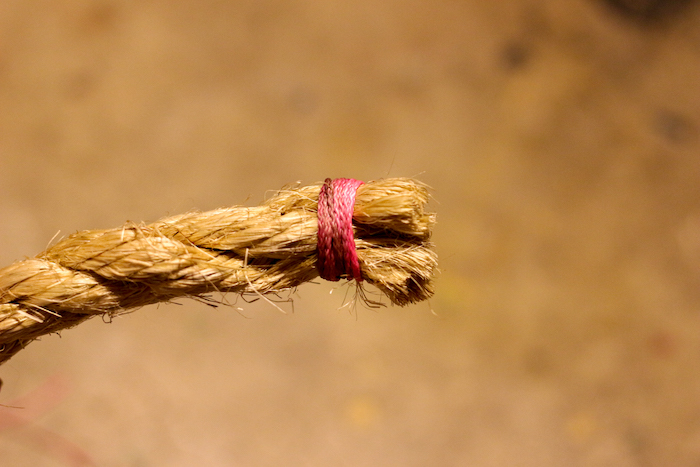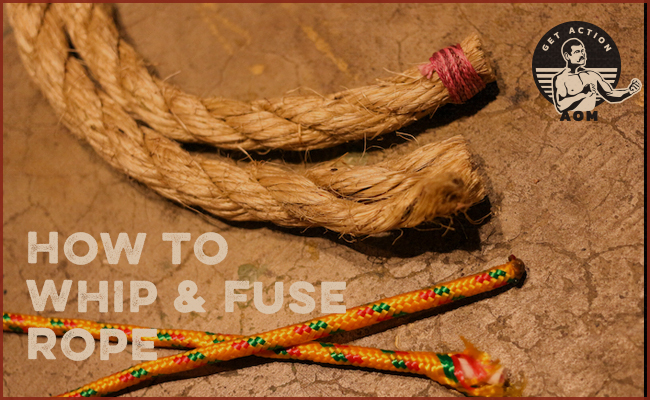
It’s easy to forget that rope is a tool; like all tools, it needs to be properly maintained in order to properly function. When rope is cut or breaks, all those fibers that were so tightly woven together are let loose and run wild. Frayed rope is hard to work with and degrades faster. Like a loose string on your favorite sweater, rope that begins to unravel will continue to do so unless it’s bound back together somehow. That’s where fusing and whipping rope comes in.
Fusing and whipping rope are two different methods to bind the end of a frayed rope. Fusing is used for ropes made from synthetic fibers, and whipping is used for natural fiber ropes. To fuse rope, all you need is a lighter. To whip rope, you can use twine, string, even dental floss. Basically, if it’s thin, strong cordage, you can whip rope with it.
How to Fuse Synthetic Rope
Step 1
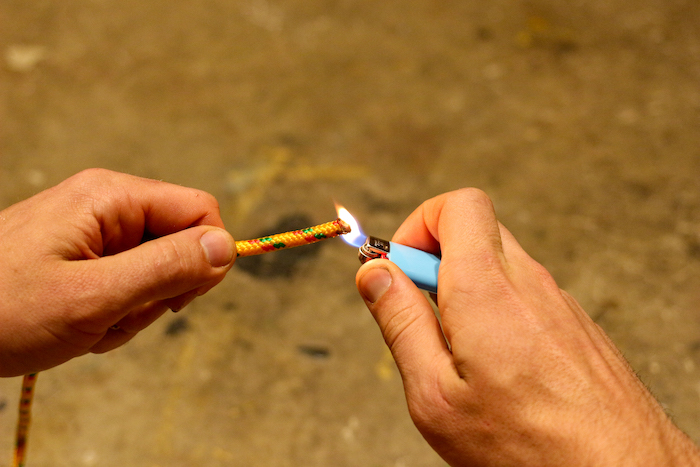
Grab your frayed rope in one hand and a lighter in the other. Hold the lighter sideways so your hand is not directly beneath the rope and pass the flame back and forth across the frayed ends. You’ll see them start to melt and fuse together.
Step 2
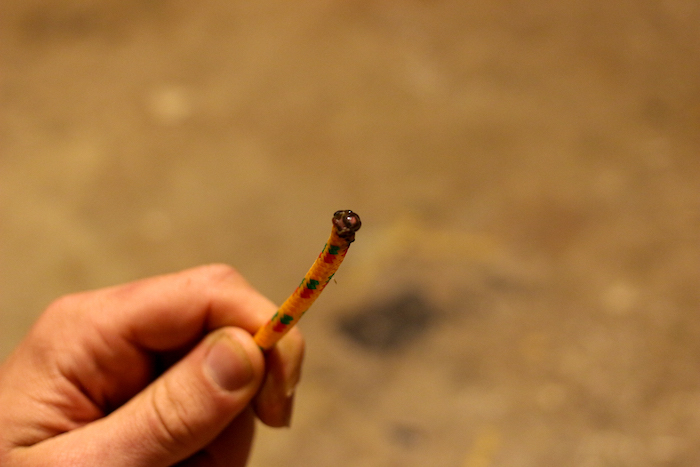
Once all the frayed ends are fused together, allow the rope to cool for at least 30 seconds before you set it down. Avoid touching the end of the fused rope or working with it for at least a few minutes. Take extra caution when fusing thicker rope, which will take longer to cool.
How to Whip Natural Fiber Rope
Step 1

Hold your frayed rope in one hand and make a loop with your whipping material in the other hand. The ends of the loop should point in opposite directions. The length of your whipping material will depend on how thick your rope is. Having extra is much easier to deal with than not having enough. For this example, I’m using about two feet of twine to whip this half-inch rope.
Step 2
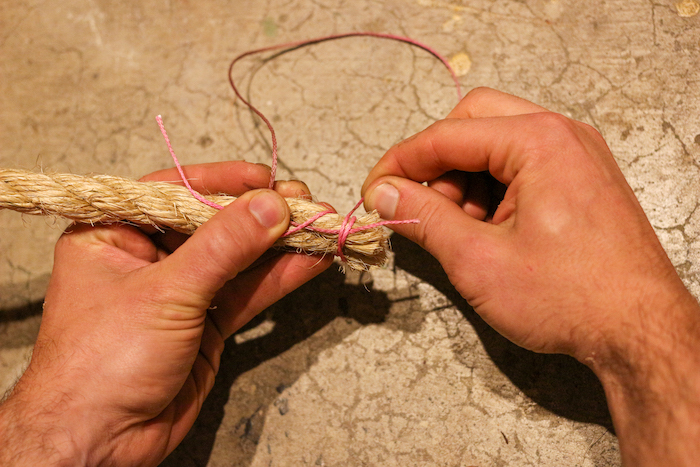
Grab the side of the loop closest to the end of the rope (the right side, in this example) and start wrapping it tightly around the frayed ends. As you wrap, you’ll overlap the ends of your twine, binding them to the rope.
Step 3

Keep whipping until the width of your wrap is roughly the diameter of your rope.
Step 4

Take the end of your twine furthest from the end of your rope (in this example, the left side) and pass it through the loop.
Step 5

Pull both ends of your twine tight, then trim the ends of the twine.
